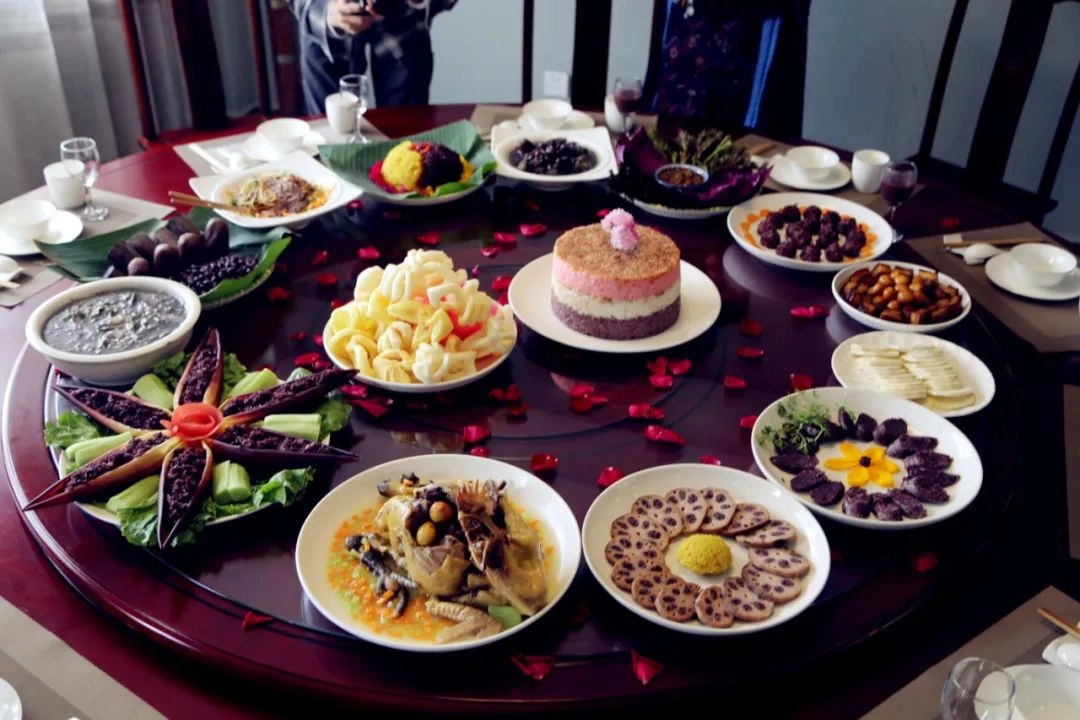The Enchanting Flavors of Mojiang Purple Rice: A Culinary Journey Through Yunnan’s Heart
From the lush, green hills of Yunnan Province, a culinary gem has emerged that is as beautiful as it is delicious. The Mojiang Purple Rice, a unique delicacy that has been cultivated along the Tropic of Cancer, offers a taste of the exotic and the traditional. 식품 감정가와 실무자로서, I am thrilled to share the story, the culture, and the culinary artistry behind this remarkable ingredient.
기원과 문화적 배경:
Mojiang Purple Rice, also known as ‘Zi Mi’, is a special variety of rice native to the Mojiang County in Pu’er City, 윈난. This region’s unique climate and fertile soil have nurtured a rice with a deep purple hue, rich in antioxidants and nutrients. The cultivation of purple rice dates back centuries, deeply rooted in the local culture and often associated with health, 번영, and longevity in the local communities.
성분과 준비:
The primary ingredient, Mojiang Purple Rice, is sourced from the region’s finest paddies. It is known for its high anthocyanin content, which not only gives it its distinctive color but also its nutritional value. To prepare the rice, it is soaked, steamed, and then used in various culinary creations. The rice’s natural sweetness and nutty flavor make it a versatile ingredient for both savory and sweet dishes.
질감과 외관:
The Mojiang Purple Rice is characterized by its deep, almost regal purple color that adds a touch of elegance to any dish. 요리 할 때, it has a slightly chewy texture, with each grain maintaining its shape, providing a delightful contrast to the softness of other ingredients. The rice’s appearance, with its vibrant color, is as much a feast for the eyes as it is for the palate.
Signature Dishes:
One of the most iconic dishes made with Mojiang Purple Rice is the Sweet Purple Rice Wine, known locally as ‘Tian Bai Jiu’. This sweet wine is made by fermenting the purple rice, resulting in a fragrant and slightly sweet beverage that is perfect for celebrations and special occasions. Another signature dish is the Purple Rice Cake, which is soft, moist, and has a subtle sweetness that complements a variety of accompaniments.
요리 기능:
The Mojiang Purple Rice is not just a food; it’s an experience. Its rich history and cultural significance add depth to every dish it graces. The rice’s unique color and health benefits make it a sought-after ingredient for those looking to add a touch of the exotic to their meals. 게다가, its ability to be used in both sweet and savory dishes showcases its versatility, making it a staple in the culinary repertoire of Yunnan.
결론적으로, the Mojiang Purple Rice is more than just a food product; it is a symbol of Yunnan’s rich culinary heritage. 식품 실무자로서, I am honored to work with such a unique and flavorful ingredient, and I encourage food lovers around the world to explore the enchanting flavors of Mojiang Purple Rice. Whether you’re sipping on the sweet purple rice wine or savoring a slice of purple rice cake, you’ll be indulging in a taste of Yunnan’s heart.
